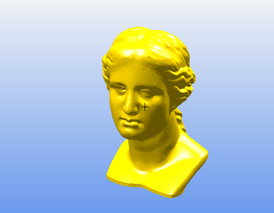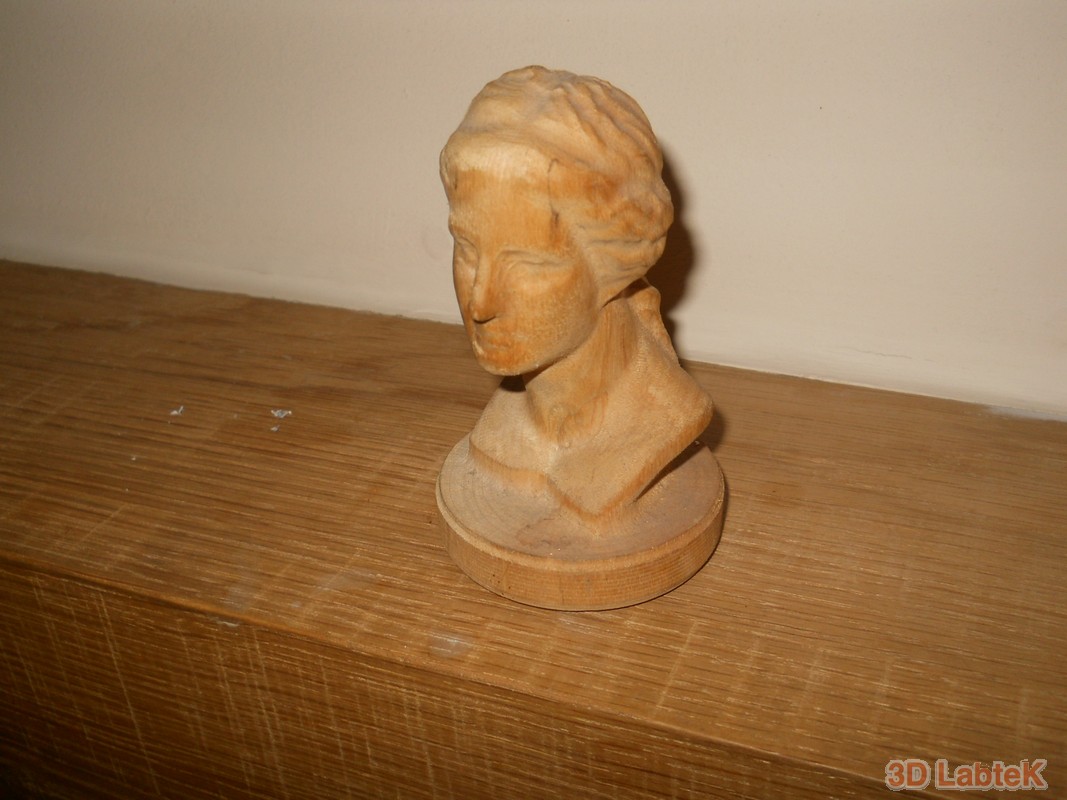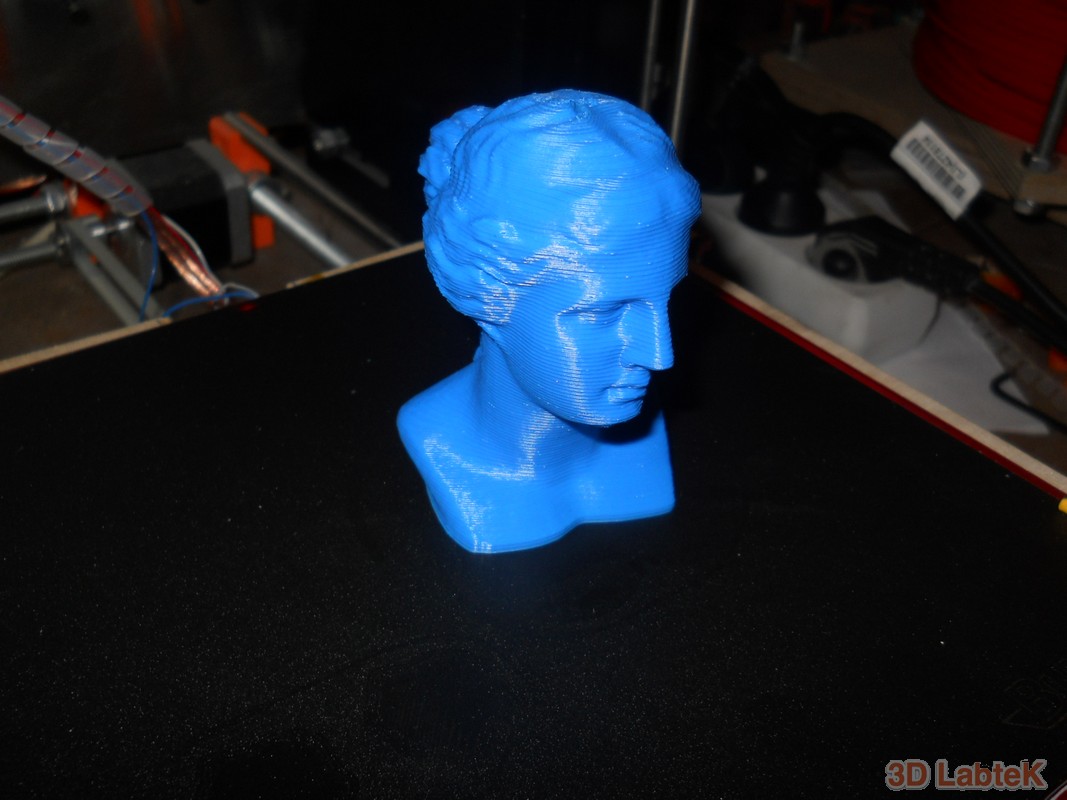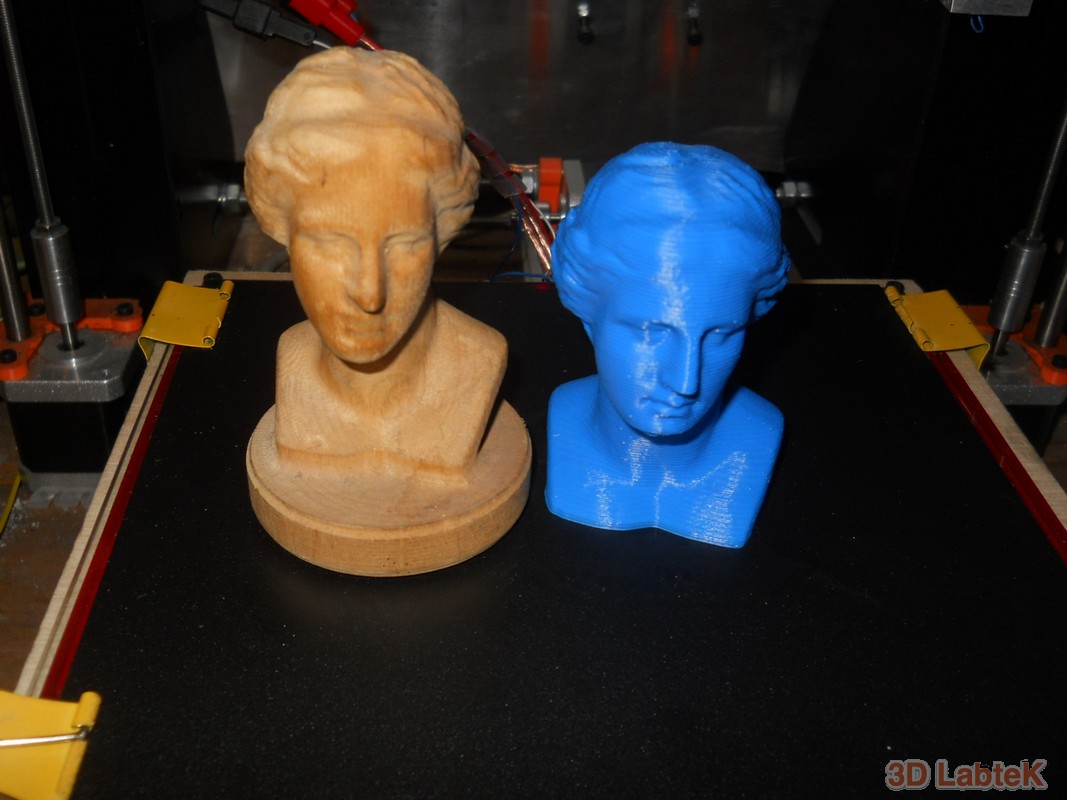Comparing two techniques for rapid prototyping.
A four axis CNC milling machine and a 3D printer
A four axis CNC milling machine and a 3D printer
| Here is the model we used on both machines to create a solid part for any purpose.
the model has been reduced to perform this test as the original was more than 30 mb in a single file | |||
Here are the tests of the two machinings
Analyzing the two models it is clear that the printed one is more defined that the machined one. The reason is the machining tool tolerance. To machine this part a 3mm radius ball mill was used, many details were not milled due to the offset generated by the program to protect the geometry from being machined.
The 3D printer on the other side does not offer a smooth surface like the milling machine, unless you smooth the model with acetone vapor if printed with ABS of course.
Thus, having a model like the one in the pic. 3D printer is much more efficient than a 4 axis CNC machine. An important advantage is the processing time 3 hours with the 3d printer against 13 hours with CNC.
It is clear that within the CNC processing time you can generate at least 4 models on a 3D printer and this already drastically decreases the prototyping price.
Furthermore, the machined part requires a material part (called Stock) that shall be prepared first to be processed on the CNC, the preparation time and cost depend on the material to be used.
The 3D printer is ready for use and the preparation is limited to the bed leveling or the build plate surface preparation. Also, the cost of the material is lower, as only the needed material is used, and there is no scrap.
Another big advantage is energy consumption. Power consumption is proportional to the working time and the power involved in both process is rather different. More than 3Kw for the CNC an about 400 Watt for a common 3D printer.
The 3D printer on the other side does not offer a smooth surface like the milling machine, unless you smooth the model with acetone vapor if printed with ABS of course.
Thus, having a model like the one in the pic. 3D printer is much more efficient than a 4 axis CNC machine. An important advantage is the processing time 3 hours with the 3d printer against 13 hours with CNC.
It is clear that within the CNC processing time you can generate at least 4 models on a 3D printer and this already drastically decreases the prototyping price.
Furthermore, the machined part requires a material part (called Stock) that shall be prepared first to be processed on the CNC, the preparation time and cost depend on the material to be used.
The 3D printer is ready for use and the preparation is limited to the bed leveling or the build plate surface preparation. Also, the cost of the material is lower, as only the needed material is used, and there is no scrap.
Another big advantage is energy consumption. Power consumption is proportional to the working time and the power involved in both process is rather different. More than 3Kw for the CNC an about 400 Watt for a common 3D printer.
| Prototyping based on 3d printed models enables developing final part dimensional aspects. This approach is much cheaper than a traditional prototyping methods. Of course for manufacturing purposes 3D printed models alone may not always be enough, and building physical models in target materials is mandatory. In this case 3D printing makes it possible to create multiple objects that can be modified and printed again and again maintaining the cost of developing new products affordable. |
This is why 3D printing is going viral in industrial applications.
To sum up, rapid prototyping with a 3d Printer is time saving, material saving and energy saving with a good quality of a prototype at the same time.
To sum up, rapid prototyping with a 3d Printer is time saving, material saving and energy saving with a good quality of a prototype at the same time.




 RSS Feed
RSS Feed
